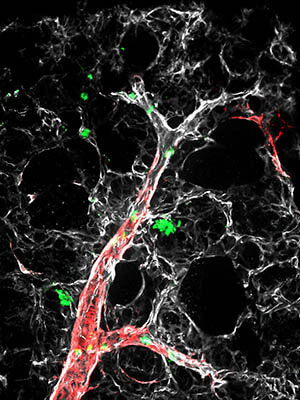
Image shows accumulation of specialized immune system cells around tiny arteries in lungs of mice with pulmonary hypertension. Staining shows different cell types: macrophage (green), smooth muscle (red), and endothelial cell (white).
Pulmonary hypertension is a type of high blood pressure that affects blood vessels in the lungs. Once diagnosed, patients have limited treatment options, and many do not live beyond seven years. In a new study, scientists in the Yale Cardiovascular Research Center have gained new insight into the development of the disease that could lead to new therapies.
First author Abdul Sheikh and senior author Daniel Greif had previously identified specialized cells in the smooth muscle of small arteries in the lungs of mice with pulmonary hypertension (PH), as well as in human cells. In this latest study, Shiekh, Greif, and colleagues focused on molecular signals between the specialized cells and other cells in the arteries of mice models of PH. They found there were signals, or crosstalk, between the different cell types that caused the specialized cells to multiply and migrate. This cell proliferation and migration leads to the narrowing and blockage of arteries in the lung that characterizes the disease.
These findings deepen understanding of mechanisms underlying this chronic, often lethal disease. With further study, the researchers aim to pinpoint a specific target for therapies to treat pulmonary hypertension earlier and more effectively.
Publication: Abdul Q. Sheikh, et al., “Cell Autonomous and Non-cell Autonomous Regulation of SMC Progenitors in Pulmonary Hypertension,” Cell Reports, 2018; doi:10.1016/j.celrep.2018.03.043

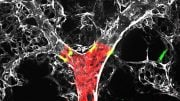
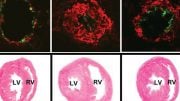
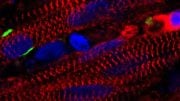


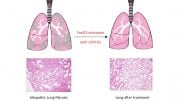


Be the first to comment on "Scientists Gain New Insight Into the Development of Pulmonary Hypertension"